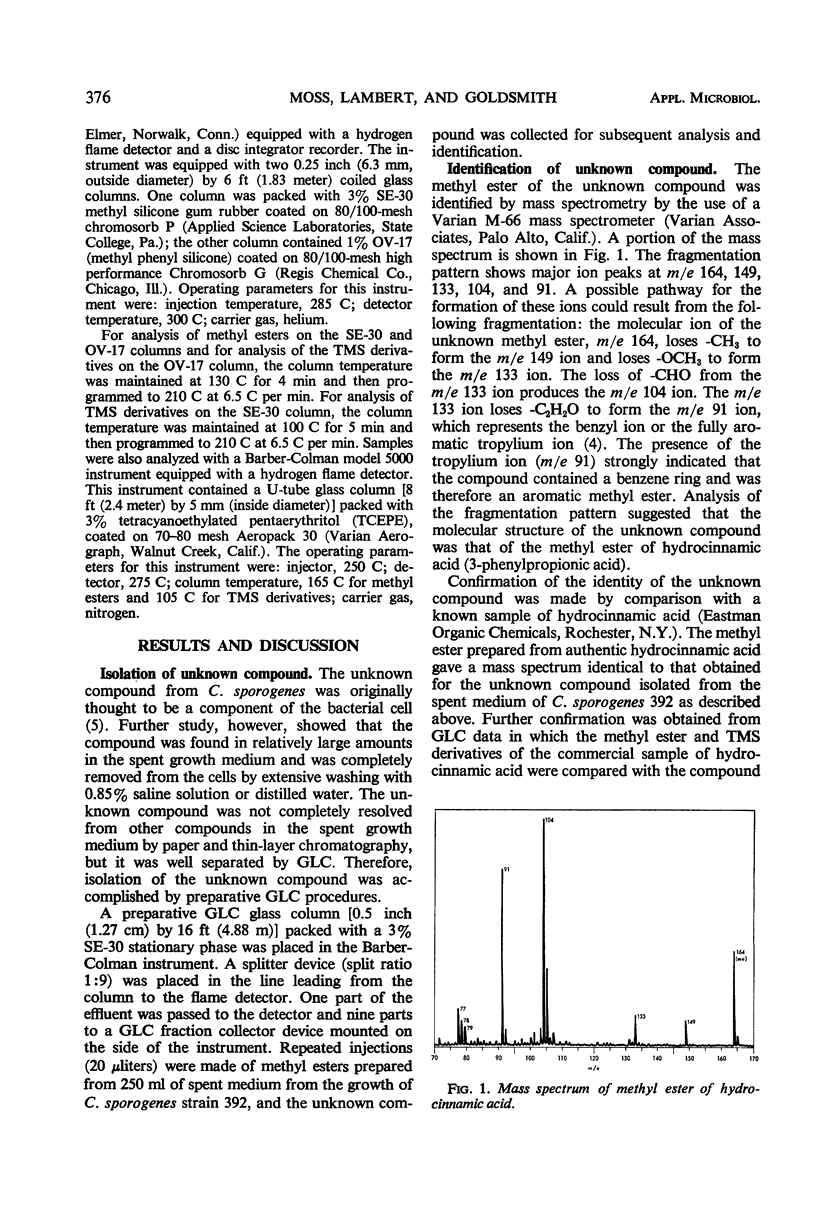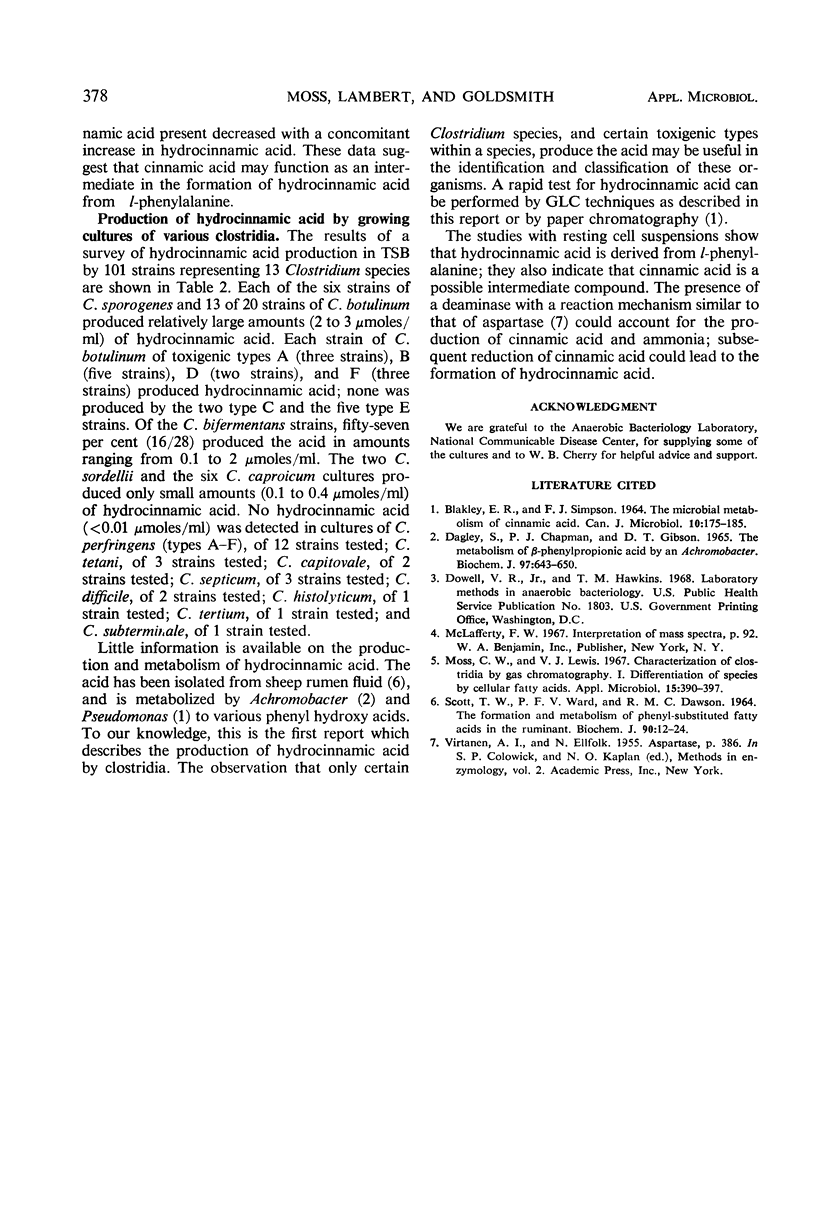Abstract
Hydrocinnamic acid was found in acid extracts of spent growth medium from cultures of Clostridium sporogenes. The acid was identified by mass spectrometry and its identity was confirmed by gas chromatography. The acid was produced in relatively large amounts (2 to 3 μmoles/ml of medium) by C. sporogenes, toxigenic types A, B, D, and F of C. botulinum, and some strains of C. bifermentans. Other strains of C. bifermentans and strains of C. sordellii and C. caproicum produced only small amounts (0.1 to 0.4 μmoles/ml) of the acid. The acid was not detected in spent medium from toxigenic types C and E of C. botulinum or from 25 other strains representing eight Clostridium species. Resting cell suspensions exposed to l-phenylalanine produced hydrocinnamic and cinnamic acid; the latter compound probably functions as an intermediate in the metabolism of l-phenylalanine.
Full text
PDF



Selected References
These references are in PubMed. This may not be the complete list of references from this article.
- BLAKLEY E. R., SIMPSON F. J. THE MICROBIAL METABOLISM OF CINNAMIC ACID. Can J Microbiol. 1964 Apr;10:175–185. doi: 10.1139/m64-025. [DOI] [PubMed] [Google Scholar]
- Dagley S., Chapman P. J., Gibson D. T. The metabolism of beta-phenylpropionic acid by an Achromobacter. Biochem J. 1965 Dec;97(3):643–650. doi: 10.1042/bj0970643. [DOI] [PMC free article] [PubMed] [Google Scholar]
- Moss C. W., Lewis V. J. Characterization of clostridia by gas chromatography. I. Differentiation of species by cellular fatty acids. Appl Microbiol. 1967 Mar;15(2):390–397. doi: 10.1128/am.15.2.390-397.1967. [DOI] [PMC free article] [PubMed] [Google Scholar]
- Scott T. W., Ward P. F., Dawson R. M. The formation and metabolism of phenyl-substituted fatty acids in the ruminant. Biochem J. 1964 Jan;90(1):12–24. doi: 10.1042/bj0900012. [DOI] [PMC free article] [PubMed] [Google Scholar]


